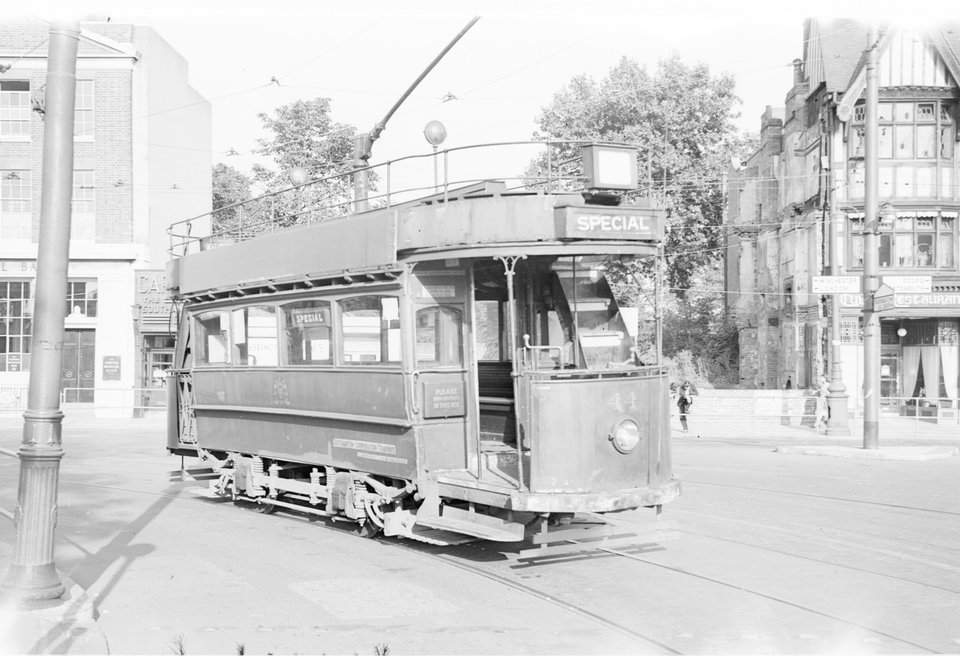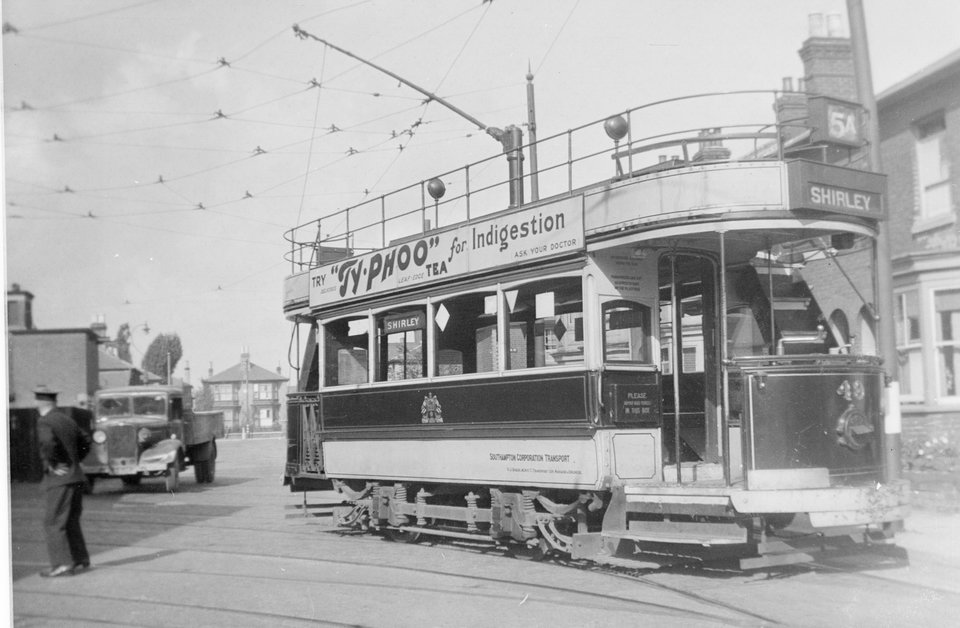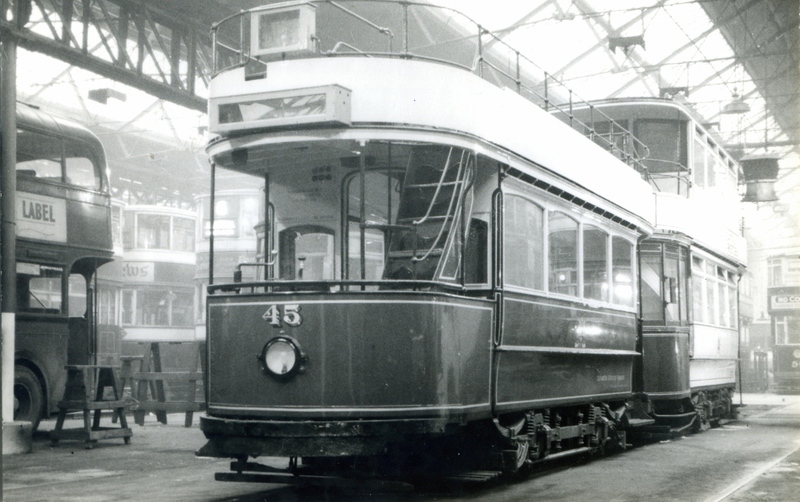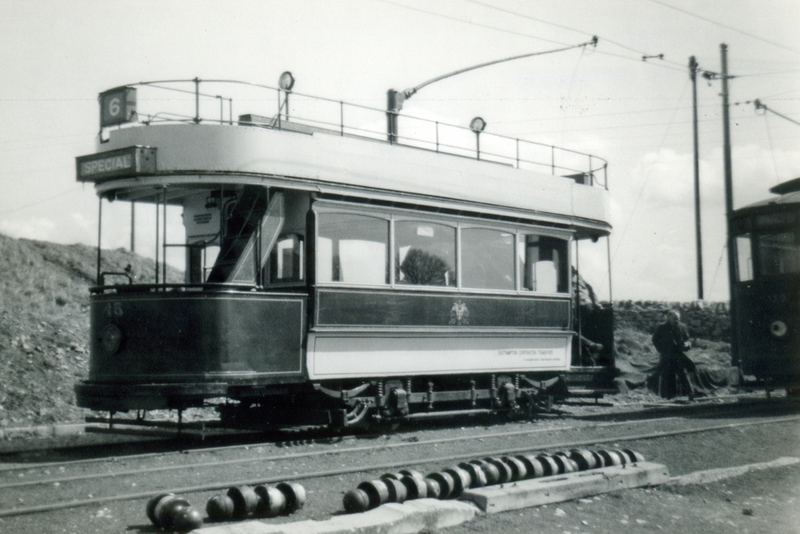Southampton Corporation No. 45
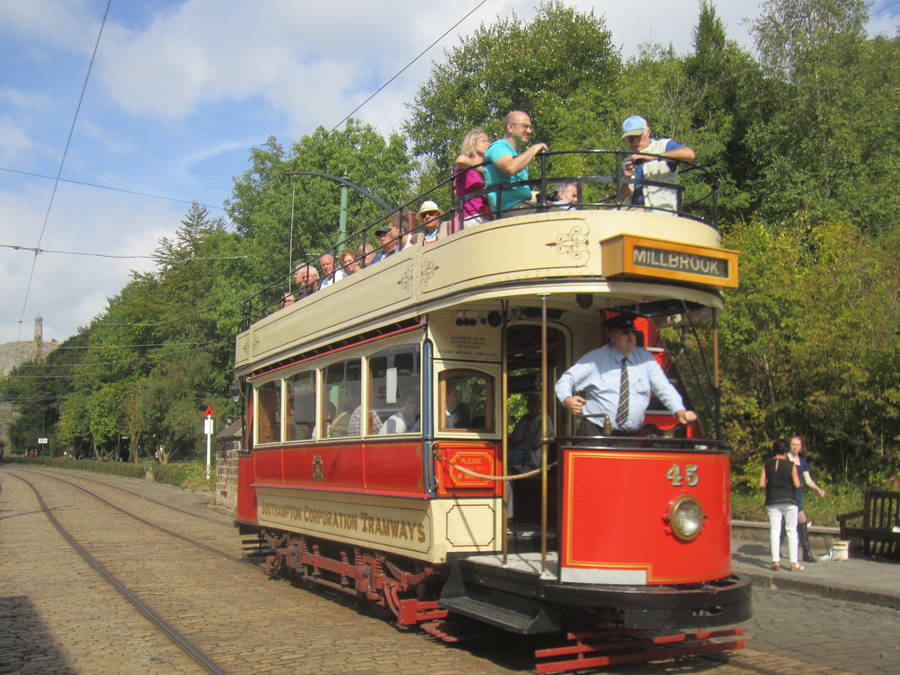
Photo: Jim Dignan
But for Southampton 45, the tramway museum at Crich might well never have come into being, for this was the tramcar that single-handedly launched the tramway preservation movement in Britain. Back in 1948 Britain’s first generation tramways were in a state of near terminal decline. Many systems had already closed before the war and most of the remainder seemed doomed to follow them into oblivion during the coming decade.
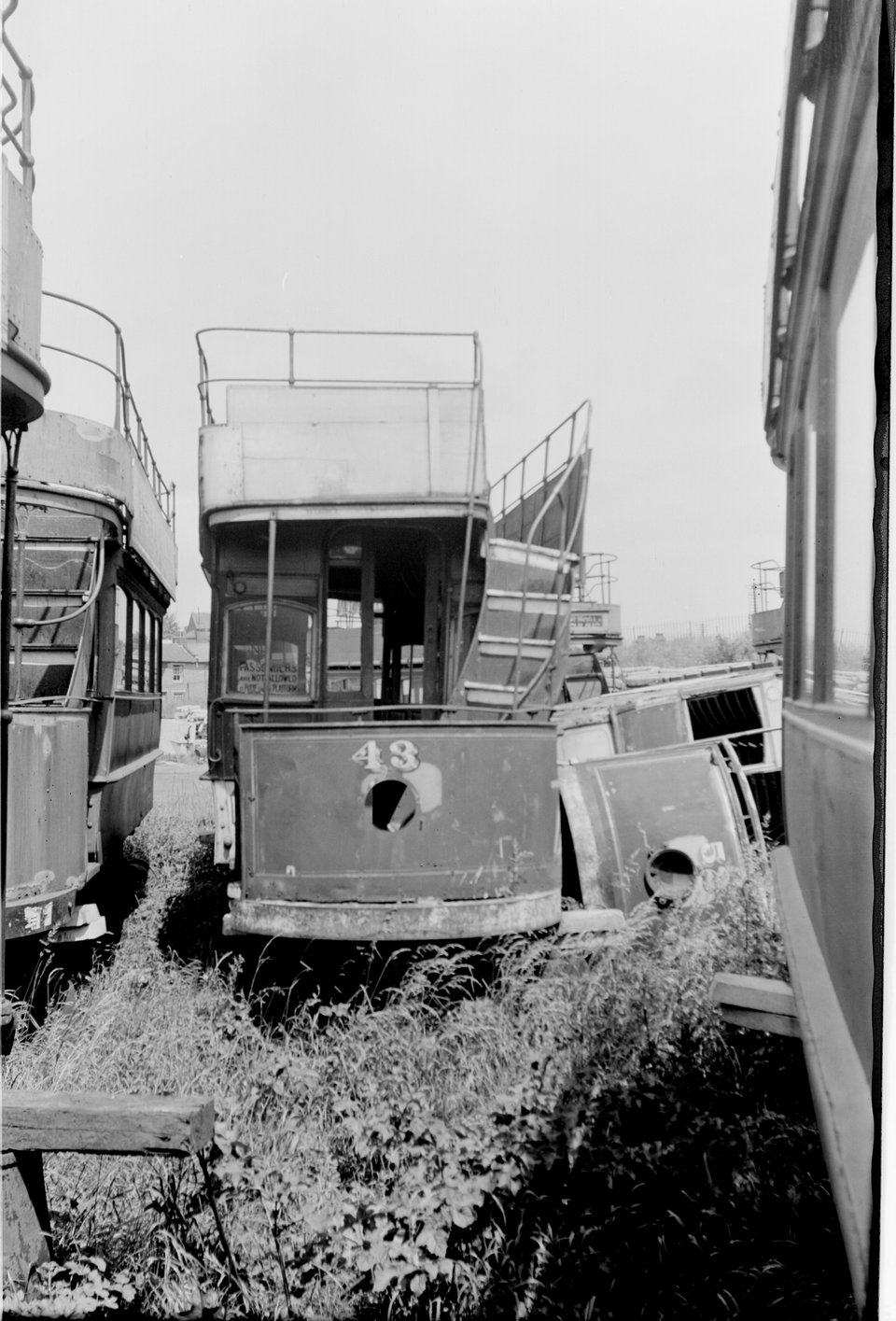
Sister car 43 in St Denys scrap yard, Southampton; an all too common fate for most of Britain’s remaining tramcars after the war. H.B. Priestley, 11/6/1949
Faced with this prospect, a group of tramway enthusiasts had already begun to organise tours of the systems that remained in operation, partly for nostalgic reasons, and partly to record this fast-disappearing mode of transport for posterity. Thanks to their enthusiasm and foresight many of the photographs taken during these tours are now to be found in the extensive photographic archives at Crich.
One such tour – the final tour of the Southampton system before its closure to be undertaken by the Light Railway Transport League – took place in August 1948. By a quirk of fate the original car used for the early part of the tour – top-covered car number 37 – became de-trolleyed and a replacement open-topped tram (number 44) was used for the remainder of the tour.
Specification
- Type of tram
- Open-topped double deck low height electric passenger tram
- Livery
- Red and ivory
- Seating capacity
- 56 (originally 48, prior to rebuilding in 1929) (32 on top deck; 24 downstairs)
- Date built
- 1903
- Date entered service
- May 1903
- Manufacturer of body
- Hurst Nelson Co. Ltd./Southampton Corporation
- Manufacturer of truck
- Brill 21E
- Gauge
- 4’ 8½”
- Motor
- Dick Kerr DK9A 2 x 25 hp
- Controller
- DK DB1 K3 (originally Westinghouse 90)
- Current collector
- Trolley
- Modification
Built as 3-window open-topper.
Rebuilt probably in 1917 as 4-window front-exit car with reversed stairs installed. Saloon height raised, flat top-cover fitted.
It reverted to open-top guise in 1929 in order to pass through the Bargate. The gaps in the dashes for the front exit under the stairs, which were originally fitted with ornate wrought-iron gates, were fitted with solid metal sheets instead.- Withdrawn from service
October 1948
- Subsequent history
Following withdrawal it was given a new truck and repainted. It then spent time in storage in Leeds (from January 1949) and Blackpool (from June 1949) before being put on open-air display in 1958 at the Montagu Motor Museum in Beaulieu. The tramcar was moved to Crich on 29 October 1960.
- Restoration history
Re-trucked and repainted free of charge in the Corporation workshops in preparation for preservation.
- Current status
- Restored in operational condition but not currently commissioned for service.
- Date started operating at Crich
- 1964. Has operated in 34 seasons, most recently in 2015.
- Total mileage covered at Crich
- 26,990
- Current location
- Great Exhibition Hall
- 1909 – 1948Operational on original tramway
- 1948 – 1958In storage
- 1958 – 1960On display at Montagu Motor Museum in Beaulieu
- 1960 – 2014Operational at Crich
- 2015 –On display

